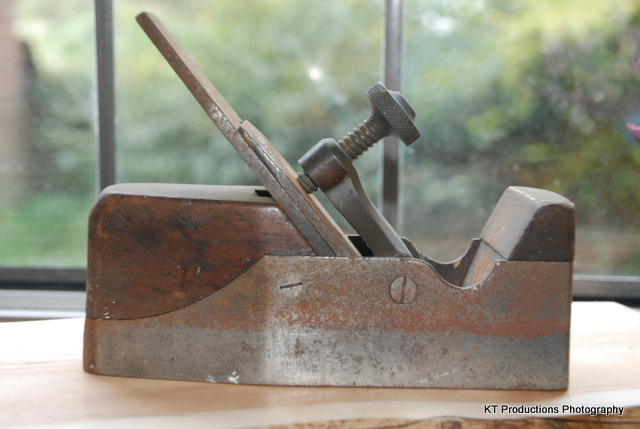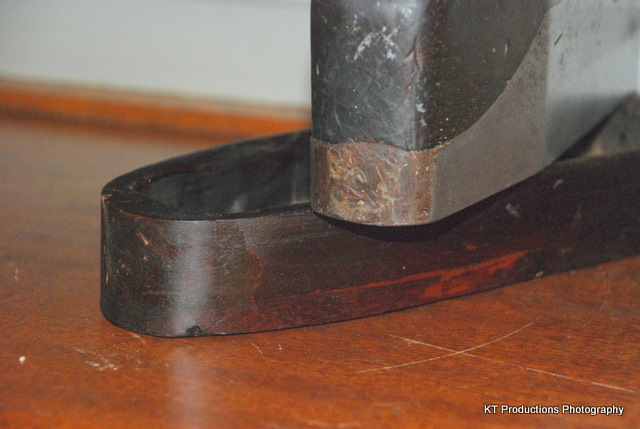Hi folks,
a few months ago I acquired a small infill smoother on ebay; the auction didn't go too high because there was damage to the metalwork at the heel, which you can see in the picture below. The same picture, in the background, shows the removed rear infilll; you should be able to make out the embedded remnant of the screw which I presume was the means that the infill was secured into the case - there are no infill-securing screws or dowels through the side walls. I imagine the damage was caused by some rather too enthusiastic tapping to adjust the iron.

When I first got it the infill seemed secure enough, but in a recent disassembly it came free. There were traces of some sort of glue on the infill base. The fit is pretty good and the plane is still very usable, but the infill now moves back a fraction of a mm when the blade is clamped with the lever cap.
So I'd like some advice on how to fix it. Please note - my metal-working skills are elementary, and certainly not up to repairing the damage to the heel. My first thought was simply to epoxy in the infill, but then I thought that woodscrews through the side-walls (one each side?) would do the trick. Or maybe both.
So, what would you do?
Thanks
Chris
a few months ago I acquired a small infill smoother on ebay; the auction didn't go too high because there was damage to the metalwork at the heel, which you can see in the picture below. The same picture, in the background, shows the removed rear infilll; you should be able to make out the embedded remnant of the screw which I presume was the means that the infill was secured into the case - there are no infill-securing screws or dowels through the side walls. I imagine the damage was caused by some rather too enthusiastic tapping to adjust the iron.

When I first got it the infill seemed secure enough, but in a recent disassembly it came free. There were traces of some sort of glue on the infill base. The fit is pretty good and the plane is still very usable, but the infill now moves back a fraction of a mm when the blade is clamped with the lever cap.
So I'd like some advice on how to fix it. Please note - my metal-working skills are elementary, and certainly not up to repairing the damage to the heel. My first thought was simply to epoxy in the infill, but then I thought that woodscrews through the side-walls (one each side?) would do the trick. Or maybe both.
So, what would you do?
Thanks
Chris







































